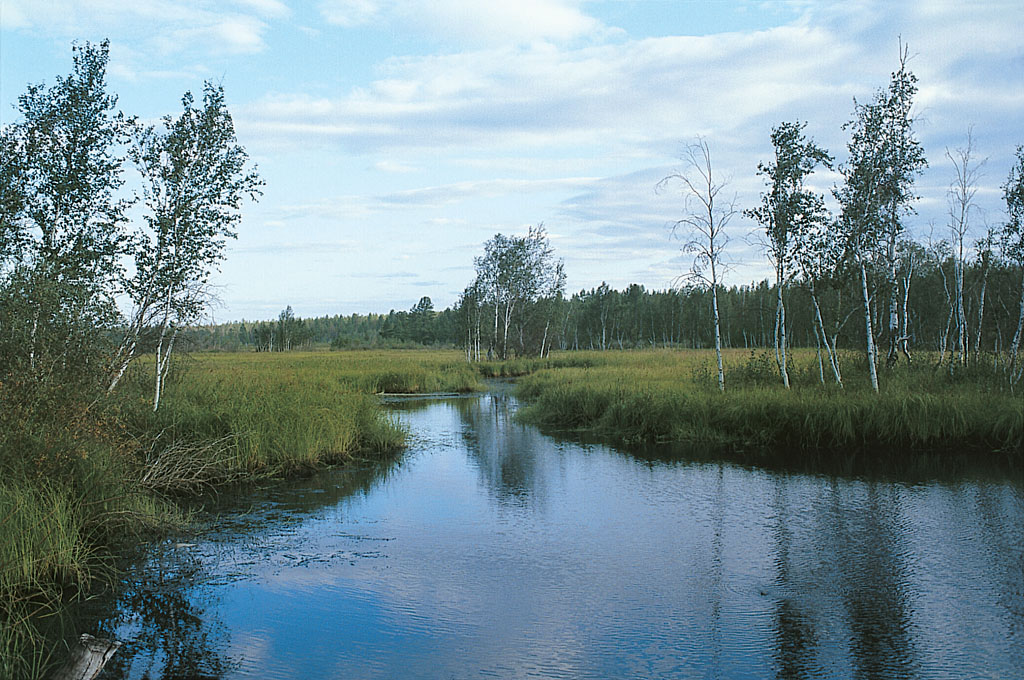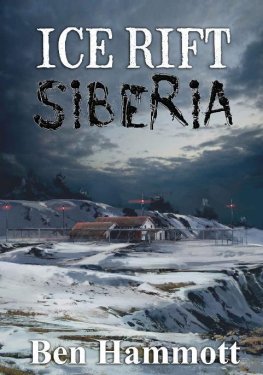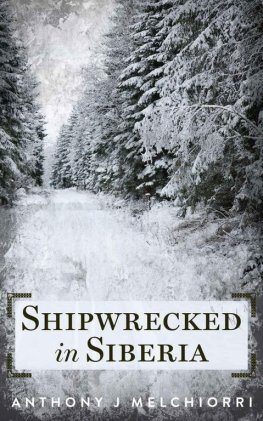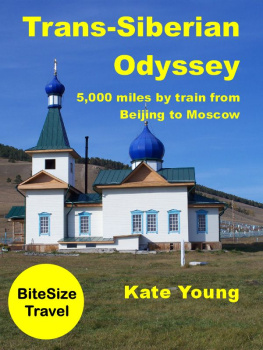Text: Maria Czaplicka,
Valentina Gorbatcheva,
Marina Federova
Layout:
Baseline Co Ltd,
61A - 63A Vo Van Tan St.
4 th Floor
District 3, Ho Chi Minh City
Vietnam
Confidential Concepts, worldwide, USA
Parkstone Press International, New York, USA
Image-Bar www.image-bar.com
All right reserved.
No parts of this publication may be reproduced or adapted without the permission of the copyright holder, throughout the world. Unless otherwise specified, copyright on the works reproduced lies with the respective photographers. Despite intensive research, it has not always been possible to etablish copyright ownership. Where this is the case, we would appreciate notification.
ISBN: 978-1-78525-933-3
Valentina Gorbatcheva - Marina Federova
ART
of
SIBERIA

CONTENTS

Swampy area in the region of Yakutsk.
I. SIBERIA: GEOGRAPHY AND HISTORY
A. AN INHOSPITABLE CLIMATE
A country of intense cold and great heat. A country outwardly wretched, but hiding in its bosom incalculable treasure.
Understood for almost three centuries to be no more than a geographical extension of the Russian state, Siberia stretches from the icy Arctic Ocean in the north to borders with Kazakhstan, Mongolia and China in the south, from the great chain of the Ural Mountains in the west to the Pacific Ocean in the east. Siberia lies (roughly) between the 45th and 77th parallels of north latitude, and extends from the 60 to the 190 of east longitude. Its most northern point is Cape Severo, or North-East Cape, a tongue of land between the estuaries of the great rivers Yenisey and Lena; Cape Vostotchni, its eastern extremity, is only forty-eight miles from Cape Prince of Wales in North America, from which it is separated by Bering Strait. Its greatest length from East to West is about 3,600 miles, and its greatest breadth from North to South a little less than 2,000 miles, forming an area which is 30% larger than Europe.
Many Europeans think of Siberia as a huge wilderness, remote and hostile to human habitation, mostly iced over, darkened by the polar night for a good part of the year. And yet Siberia is nothing if not diverse. From north to south there are a number of large areas that are completely different from each other in climate, terrain, flora and fauna. As you move southward, the Arctic wastes gradually transform into the tundra with its permafrost; further south, the tundra in turn transforms into the slightly warmer zones where scrubby trees will grow; further south still is the evergreen coniferous forest of the taiga; continuing south, there are the fertile steppes and then the arid steppes and all these various ecological areas come with their own topographical relief, from low-level flatlands to massively towering peaks.
Occupying the greater part of this vast landmass, the central Siberian plateau is bound to the north, east and south by an enormous amphitheatre of mountain chains. To the north and east are the mountains of Verkhoyansk, which at their highest reach 9,097 feet (2,389 metres). Forming Siberias southern boundary are the Sayan mountains (9,612 feet/2,930 metres) and the ranges of the Altai (which at Mt Belukha top out at 14,783 feet/4,506 metres). Within these various chains lie the sources of the three great Siberian rivers, the Ob, the Yenisey (a name derived from Evenki ioanessi great river), and the Lena. These rivers are frozen over for much of the year between October/November and May/June but at other times flow powerfully across Siberia for about 2,500 miles (4,000 kilometres) until they reach the cold Arctic Ocean.
The peninsula of Kamchatka, an important center of Siberian aboriginal life, is a long, irregular tongue of land lying east of the Okhotsk Sea, between the fifty-first and sixty-second degrees of north latitude, and measuring in extreme length about seven hundred miles. It is almost entirely of volcanic formation, and the great range of rugged mountains by which it is longitudinally divided includes five or six volcanoes that are still active today. This immense chain of mountains stretches from the fifty-first to the sixtieth degree of latitude in one almost continuous ridge, and at last breaks off abruptly into the Okhotsk Sea, leaving to the north a high level steppe called the dole or desert, which is the wandering ground of the reindeer-herding Koryaks. The central and southern parts of the peninsula are broken up by the spurs and foot-hills of the great mountain range into deep sequestered valleys of the wildest and most picturesque character, and afford scenery whose majestic and varied beauty is difficult to match in all northern Asia. The climate everywhere, except in the extreme north, is comparatively mild and equable, and the vegetation has an almost tropical freshness and luxuriance to it.
The Arctic Ocean to the north of Siberia is divided into several regional seas from west to east, the Kara Sea, the Laptev Sea and the East Siberian Sea which are likewise choked with a thick blanket of ice for at least ten months of the year. The summer period of remission is brief: just the remaining two months, July and August.
Orographically, Siberia may be naturally divided into two parts: the lowland west of the Lena, through which only a few less important mountain ridges run, and the immense region to the east of that river, traversed by the great chain of the Jablonoff mountains, which in some places to the south-east reach a height of nearly 7000 feet, giving to this part of the province the character of a mountainous region. Shut off by mountain-chains from the warmer currents of air coming from the south and the south-east, and exposed to the Arctic winds from the north, this immense country has possibly the severest climate in the world. The winter commences early.
The smaller rivers and the numberless lakes begin to freeze in September. In the first or second week of October the whole country is covered with snow. The cold increases day by day. In the middle of the winter the temperature may remain for weeks together below the freezing-point of mercury, and at times will sink to 80 degrees below zero Fahrenheit. Such a low temperature gives a keen and penetrating sharpness to the air, and all life seems to have congealed. The Siberian winter does not rage and roar, as does that of northern Europe, but suppresses all motion. Neither the sun, which only for a few hours appears above the horizon, nor the earth, which is frozen to an unknown depth and in the summer melts only two or three feet, can withstand its power. The constantly growing cold compresses the air more and more, until it finally threatens, as it were, to suffocate all life beneath its weight. The strongest currents of air from the Arctic sea, from the Pacific, or from the immense continental regions lying to the south are unable to move this inert and compressed mass of air.
In these northerly latitudes, the ground surface permanently frozen is mostly shingle, perhaps covered in algae, lichens and mosses. This is the true Arctic wilderness and characterizes most of the islands, especially those off the coast of the Taimyr Peninsula. Seals, walruses, belugas and polar bears populate the coastline.
As distance increases from the north pole southwards, the Arctic wilderness turns into the tundra a bare region in which only lichens, mosses, and short, scrubby trees (dwarf species of birch or willow, mainly) shroud the ground, with some spiky plants and Arctic grasses. Winter in the tundra is lengthy between eight and ten months and cold. At the end of November the sun dips below the horizon and does not return. This is the polar night, which in the tundra lasts for two or three months (compared with up to six months in the Arctic wilderness). Then finally, in January, the sun reappears once more, and the days little by little lengthen even as the nights little by little become shorter. This goes on until, from sometime in May to sometime in July, the sun doesnt leave the sky at all.
Next page










